What's New
Displaying results 2501 - 2510 of 4914

Resource | Publications,
The United Nations Secretary-General establish a high-level body to propose ways of incentivizing health technology innovation and increasing access to medicines and treatment, Secretary-General Ban Ki-moon, in November 2015, announced the appointment of a High-Level Panel on Innovation and Access to Health Technologies.
According to a High-Level Panel convened to advise the UN Secretary-General on improving access to medicines, the world must take bold new approaches to both health technology innovation and ensuring access so that all people can benefit from the medical advances that have dramatically improved the lives of millions around the world in the last century.
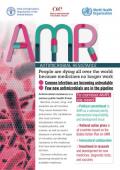
Resource | Laws and Policies,
Antimicrobial resistance (AMR) has become one of the biggest threats to global health and endangers other major priorities, such as human development. All around the world, many common infections are becoming resistant to the antimicrobial medicines used to treat them, resulting in longer illnesses and more deaths. At the same time, not enough new antimicrobial drugs, especially antibiotics, are being developed to replace older and increasingly ineffective ones.
Global leaders will meet at the United Nations General Assembly in New York in September 2016 to commit to fighting antimicrobial resistance together. This is only the fourth time in the history of the UN that a health topic is discussed at the General Assembly (HIV, noncommunicable diseases, and Ebola were the others). Heads of State and Heads of Delegations are expected to address the seriousness and scope of the situation and to agree on sustainable, multisectoral approaches to addressing antimicrobial resistance.
General Assembly of the United Nations: High-level Meeting programme
Fact sheet on AMR
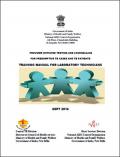
Resource | Publications,
While tuberculosis (TB) is the commonest opportunistic infection (OI) in HIV-infected individuals, HIV infection is an important risk factor for acquiring TB infection and its progression to active TB. HIV/TB together is a fatal combination with extremely high death rates (15 to 18%) reported among HIV-infected TB cases notified under Revised National TB Control Programme (RNTCP). Overall, TB is estimated to cause about 25% of all deaths among PLHIV in India.
This report has been developed to guide the Lab technicians regarding procedures of HIV testing services and provider initiated testing and counselling (PITC) among presumptive TB and diagnosed TB cases. The valuable inputs provided by experts from RNTCP and NACP in developing this document are appreciated.

Resource | Publications,
The study investigated the vulnerabilities, challenges, and their consequences faced by the transgender communities. The research study has led to highlighting specific advocacy initiatives, which will help in awarding equal citizenship and dignity to the transgender community.
The transgender as a gender identity itself is defined in two manners. One approach is to regard transgender as an adjective, as a quality that further qualifies a noun like man, woman, person or individual. In this approach a transgender person is one whose gender identity is different from the physical sex/gender at birth. The other approach considers transgender an umbrella term that encompasses all genderqueer and gender-variant identities. However it is evident that in no way should transgender be confused with being “third-gender”; both are distinct and greatly differ from each other.
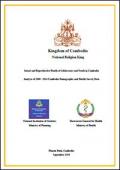
Resource | Publications,
Cambodia has the youngest population in Southeast Asia, with 22 % aged 15 and 24 years. Young people face many sexual and reproductive health concerns such as sexually transmitted infections, unwanted pregnancies, unsafe abortion, STIs, HIV and AIDS. These health concerns are exacerbated by the lack of sexual and reproductive health information, knowledge, youth friendly services, poor education attainment (i.e. low school enrolment, high dropout rates, and high repetition rates), and rural to urban migration for employment often placing young people at a social and economic disadvantage, especially those living in rural areas. Limited information is available about the sexual and reproductive health of adolescents and youth in Cambodia, and information that is available generally relates to sub-populations.
The aim of this report was to describe the current state of the sexual and reproductive health of adolescents and youth in Cambodia and this was achieved through the analysis of data on young women aged 15-24 years from the four Cambodian Demographic and Health Surveys (CDHS) conducted in 2000, 2005, 2010 and 2014.

Resource | Publications,
This is the 32nd edition of the "Indicators for Monitoring and Evaluation of The Strategy Health for All" since the first Common Framework for evaluation (CFE) was carried out in 1985. The global indicators have remained unchanged ever since. These indicators represented the essential minimum for member countries of WHO to evaluate their own national strategy towards HFA goals.
Following each alternating cycle of monitoring and evaluation by the member countries and by the
six regional coordinating centres, the Executive Board of the WHO and the World Health Assembly
was able to evaluate the HFA strategy globally. With each global monitoring and evaluation, the list of indicators was modified to ensure that it was adequate. In the course of the global reviews, the list of indicators was supplemented by sub-indicators and additional indicators to facilitate country monitoring and evaluation.

Resource | Publications,
This Statistical Yearbook of Bhutan (SYB) 2016 publication is the 34th edition. It is a comprehensive and systematic compendium of basic statistical information on the country’s socio-economic conditions.
The SYB is expected to serve as the principal source of information for planners, policy makers, researchers and academicians both within and outside Bhutan. The compilation is based on information gathered through periodic statistical censuses and surveys, as well as from administrative data maintained by various ministries, agencies, corporations and private organizations.
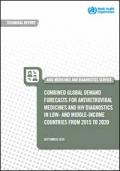
Resource | Publications,
The number of people receiving antiretroviral therapy (ART) in low- and middle-income countries continues to show promising growth, indicating that the global effort to scale up HIV treatment has exceeded 15 million people by the end of 2015. As of the end of 2015, the number of people receiving ART had reached 15.9 million in low- and middle-income countries, indicating a stable annual growth rate of 1.8 million per year since 2012.
The goal of this report is to provide countries and suppliers with estimates of the global market for antiretroviral (ARV) medicines in low- and middle-income countries for 2015–2020. The report includes estimates of the global demand for both active pharmaceutical ingredients and ARV formulations to enable suppliers to manage their manufacturing capacity accordingly.
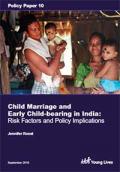
Resource | Publications,
Prevalence rates of child marriage and early child-bearing have been declining across India over the past two decades, but absolute numbers remain high. This paper uses data collected from 3,000 children over 15 years in Andhra Pradesh and Telangana by Young Lives, a longitudinal study of childhood poverty, to provide an evidence base from which to strengthen policy and programming in this area.
An ecological life-course framework is used to explore the causes of child marriage and early child-bearing and the factors which help to prevent them. Findings show that girls who stay in school for longer marry later, but gender gaps in enrolment widen during adolescence; where household resources are limited, gendered social risks become more acute and parents are forced to make decisions which disadvantage girls; aspirations matter but reflect wider realities; and social norms that encourage early child-bearing are compounded by inequitable access to health and education services.
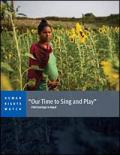
Resource | Publications,
Thirty-seven percent of girls in Nepal marry before age 18 and 10 percent are married by age 15, in spite of the fact that the minimum age of marriage under Nepali law is 20 years of age. Boys also often marry young in Nepal, though in lower numbers than girls. UNICEF data indicates that Nepal has the third highest rate of child marriage in Asia, after Bangladesh and India.
In interviewing dozens of children and young people, Human Rights Watch learned that these marriages result from a web of factors including poverty, lack of access to education, child labor, social pressures, and harmful practices. Cutting across all of these is entrenched gender inequality, and damaging social norms that make girls less valued than boys in Nepali society.





